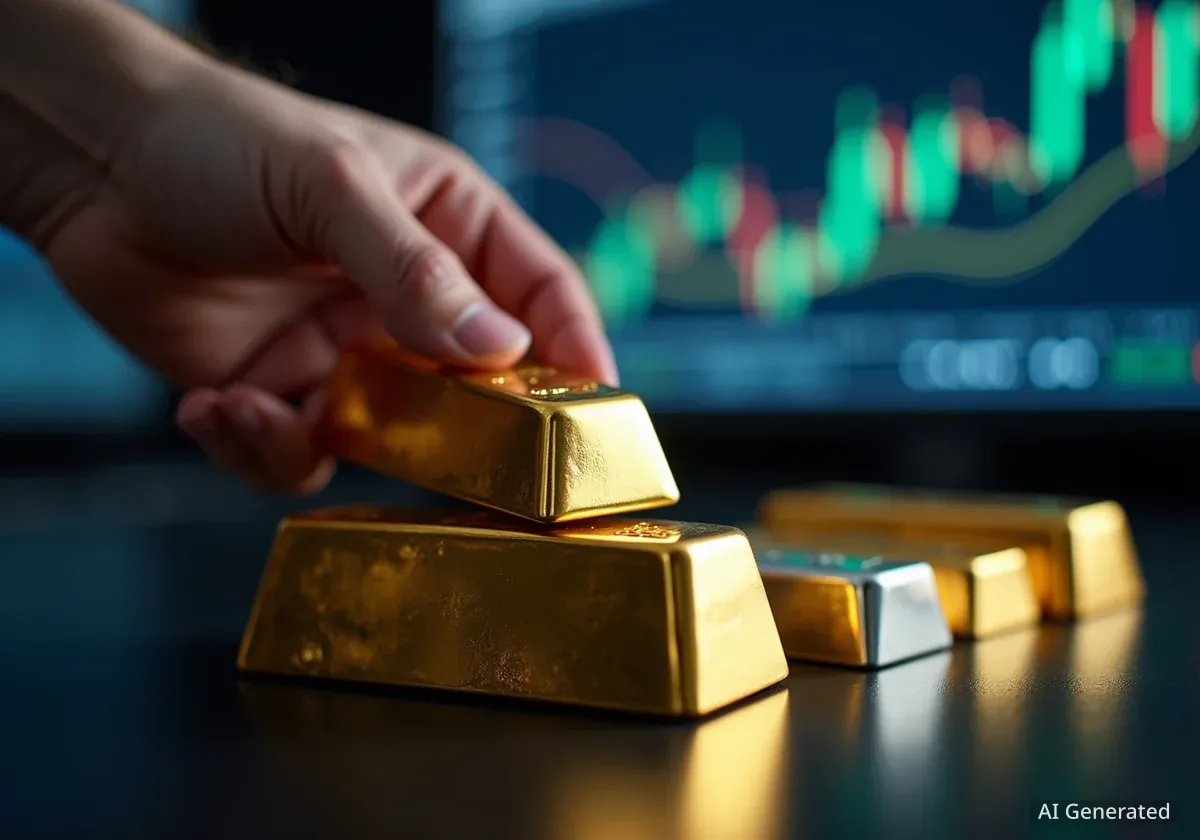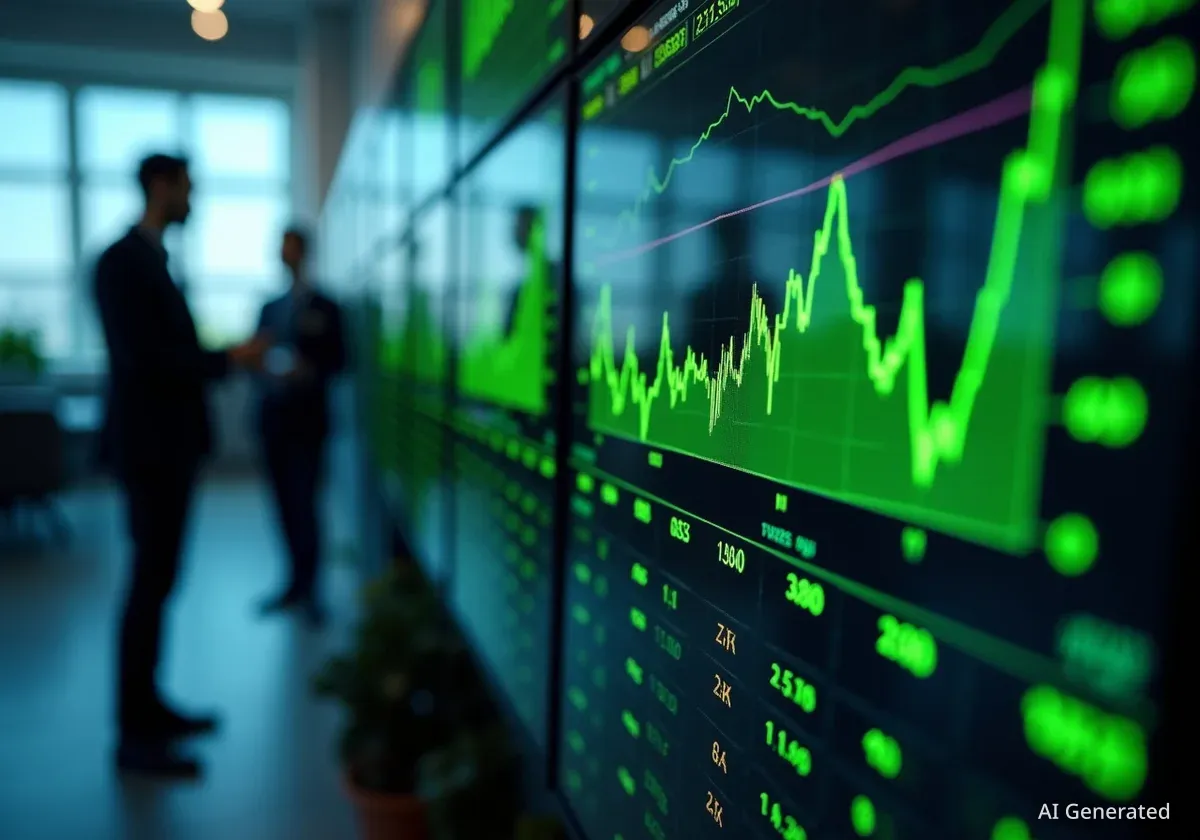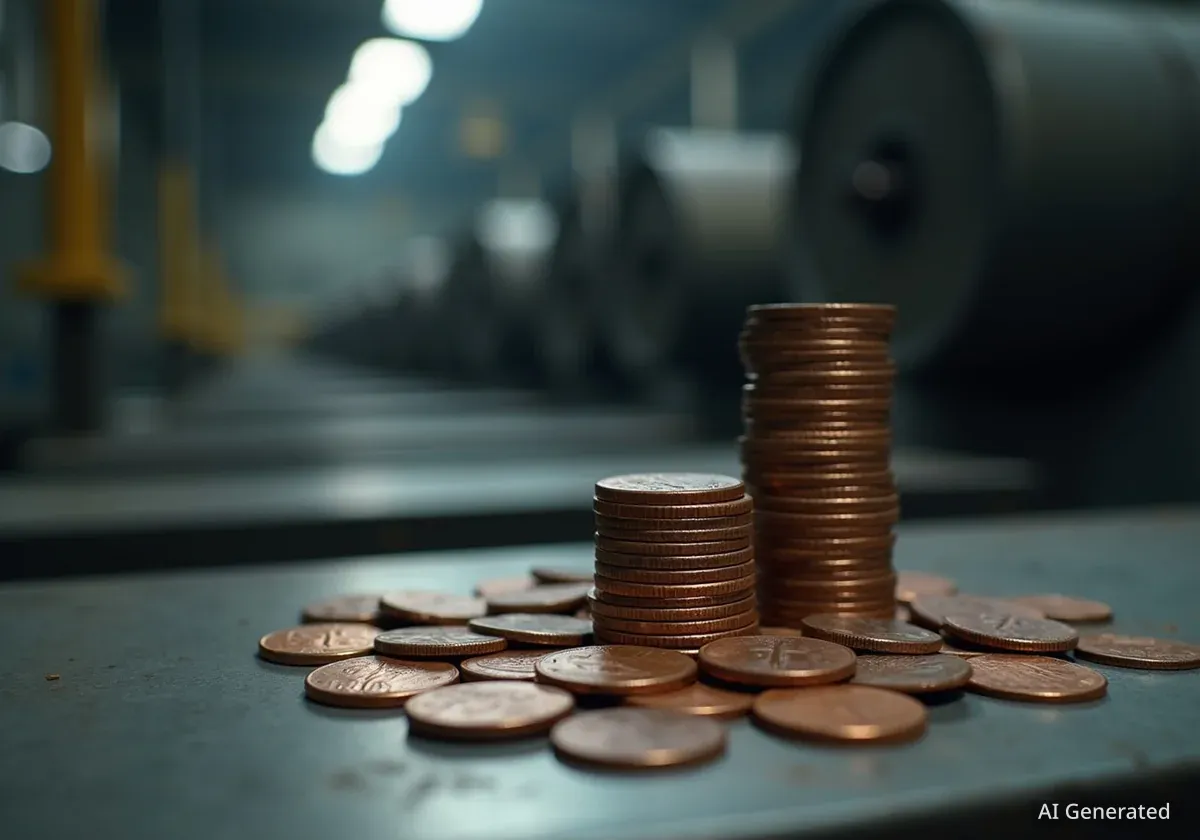The global precious metals market is experiencing significant price movements, with gold setting new records and silver reaching a 14-year high. These shifts are driven by a combination of factors, including U.S. monetary policy, tightening supplies for industrial metals like palladium and platinum, and increased demand for safe-haven assets.
Recent data shows the Global Precious Metals Monthly Metals Index (MMI) increased by 1.14%, reflecting broad strength across the complex. The U.S. Federal Reserve's decision to cut interest rates by 25 basis points has weakened the dollar, making non-yielding assets like gold and silver more attractive to investors.
Key Takeaways
- Gold prices reached a new record high of $3,688.90 per troy ounce on September 17.
- Silver surged to a 14-year high, trading at $40.61, up 42% year-over-year.
- Palladium and platinum prices are rising due to significant supply deficits and geopolitical tensions.
- The U.S. Federal Reserve's interest rate cuts are a primary catalyst, weakening the dollar and boosting safe-haven demand.
Palladium Rallies on Supply Fears and Sanction Threats
Palladium has seen a notable price increase over the past two weeks, fueled by growing concerns over its global supply. A significant portion of this concern stems from Russia, which is responsible for nearly half of the world's palladium production. On September 10 alone, the metal's price jumped by more than 3% as investors reacted to potential sanctions.
In the United States, a delegation led by Montana senator Tim Sheehy has formally requested a 50% tariff on Russian palladium. The proposal aims to address what are described as "predatory trade practices" that have negatively impacted domestic prices and mining operations.
Palladium Market Outlook
According to Trading Economics, palladium is forecast to trade around $1,189 by the end of the current quarter and reach $1,303 within a year, highlighting expectations of continued price strength.
The supply situation is further complicated by production issues. Primary supply from key regions like South Africa and North America is declining faster than demand. While an increase in recycling, partly due to China's vehicle trade-in programs, has provided some relief, it has not been enough to offset the shortfall in new production.
Platinum Deficit Deepens Amid Production Setbacks
Platinum is experiencing market dynamics similar to palladium, with a growing supply deficit putting upward pressure on prices. The World Platinum Investment Council (WPIC) projects a substantial deficit of 850,000 ounces for 2025, citing weak refined output as a primary cause.
Production has been hampered by external factors. In South Africa, a major platinum producer, heavy rainfall contributed to an 8% year-on-year decline in output during the second quarter. Mine production is expected to continue its downward trend, further tightening the market.
A Cheaper Safe Haven
With gold prices at record highs, some investors are turning to platinum as a more affordable safe-haven asset. This shift in demand, combined with the supply shortage, is contributing to its bullish outlook.
Market analysts are taking note of these trends. Trading Economics forecasts that platinum could reach $1,451 per ounce by the end of the quarter and rise to $1,562 within 12 months. Businesses that rely on platinum are advised to monitor potential U.S. tariffs on products containing the metal, as some finished goods are already subject to taxes.
Silver Hits 14-Year High on Monetary Policy and Industrial Demand
Silver has captured significant attention this month, with its price soaring to a 14-year high. On September 2, silver was priced at $40.61 per ounce, marking a 42% increase from the previous year and a 10.7% rise from its August level. This rally is largely attributed to expectations of further interest rate cuts by the U.S. Federal Reserve, which typically weakens the dollar and benefits precious metals.
"Silver has been in a structural deficit for seven consecutive years, with mine supply having fallen 7% since 2016. Meanwhile, demand for electrical and electronics has risen 51% during the same period," noted Sprott Asset Management in a recent analysis.
This long-term structural imbalance underscores the fundamental strength in the silver market. The decline in mine supply contrasts sharply with the surging demand from industrial sectors, particularly for electronics and electrical components where silver is a critical input.
Technical indicators also suggest continued positive momentum. Analysts at FXStreet point to a bullish outlook, with key moving averages and the relative strength index (RSI) indicating that prices could potentially climb toward the $45 per ounce mark.
Gold Continues Record-Breaking Performance
Gold has continued its impressive rally, setting a new record high on September 17 when its price reached $3,688.90 per troy ounce. The surge is driven by a confluence of macroeconomic factors, including dovish central bank policies, persistent trade tensions, and growing concerns over U.S. national debt.
Strategists at Citigroup have advised clients that the current bull market in gold and silver is likely to broaden. They anticipate that investor interest could expand to industrial metals like copper and aluminum next year, supported by the same economic tailwinds.
Historical Precedent for Gold
According to CBS News, historical patterns show that periods of interest rate cuts, rising inflation, and market uncertainty have consistently propelled gold prices higher. Some analysts believe these conditions could push gold beyond the $4,000 per ounce threshold.
Demand for gold remains strong across the board. Trading Economics highlights that the rally is supported by consistent safe-haven flows from investors seeking stability amid geopolitical risks. Central banks also continue to be significant buyers, adding to their gold reserves.
While the high cost of gold has led some investors to consider alternatives like platinum, the yellow metal's fundamental role as a portfolio hedge ensures its demand remains robust. For businesses, this means that the cost of components for jewelry and electronics that are tied to gold prices may continue to rise.





